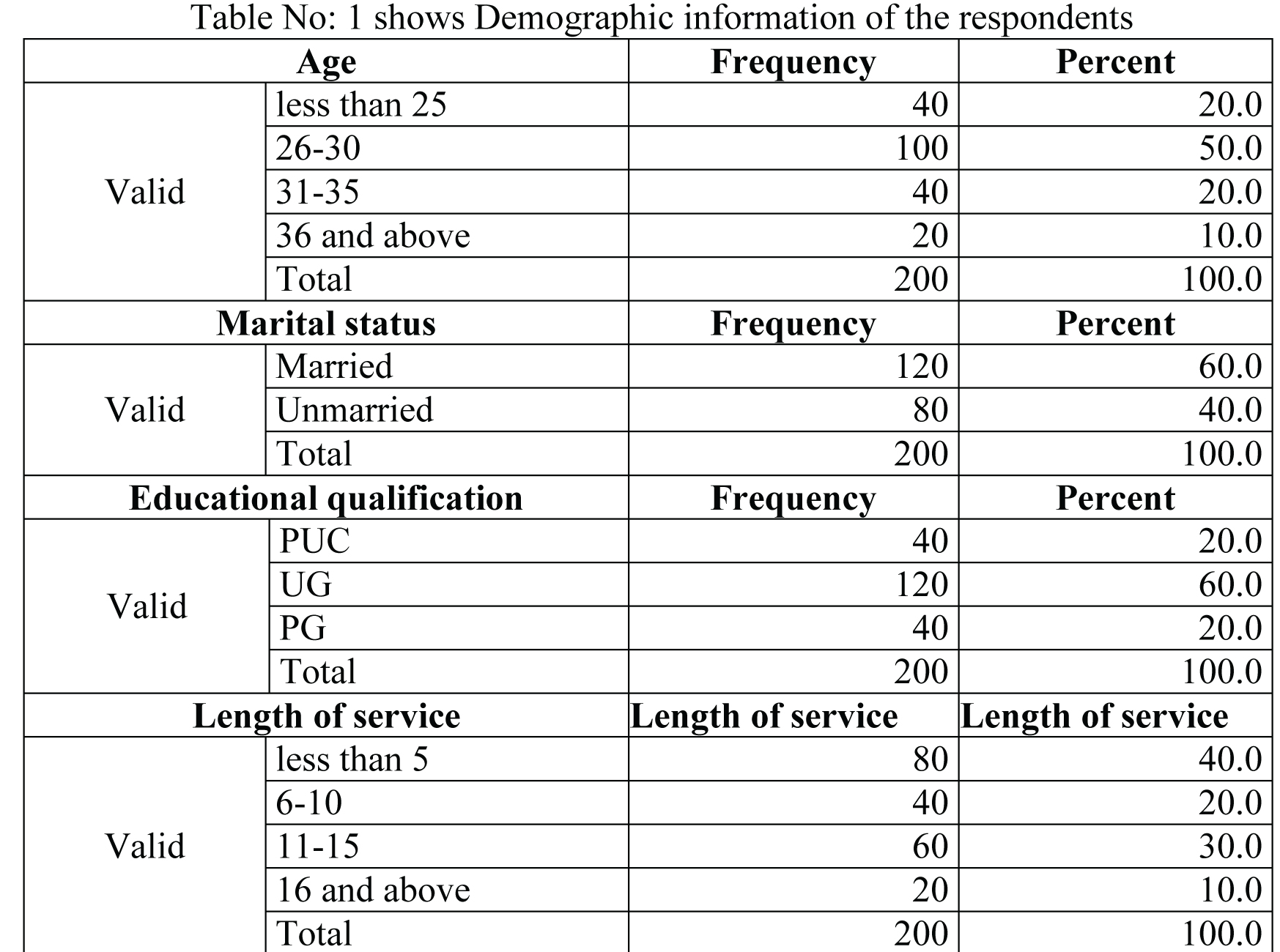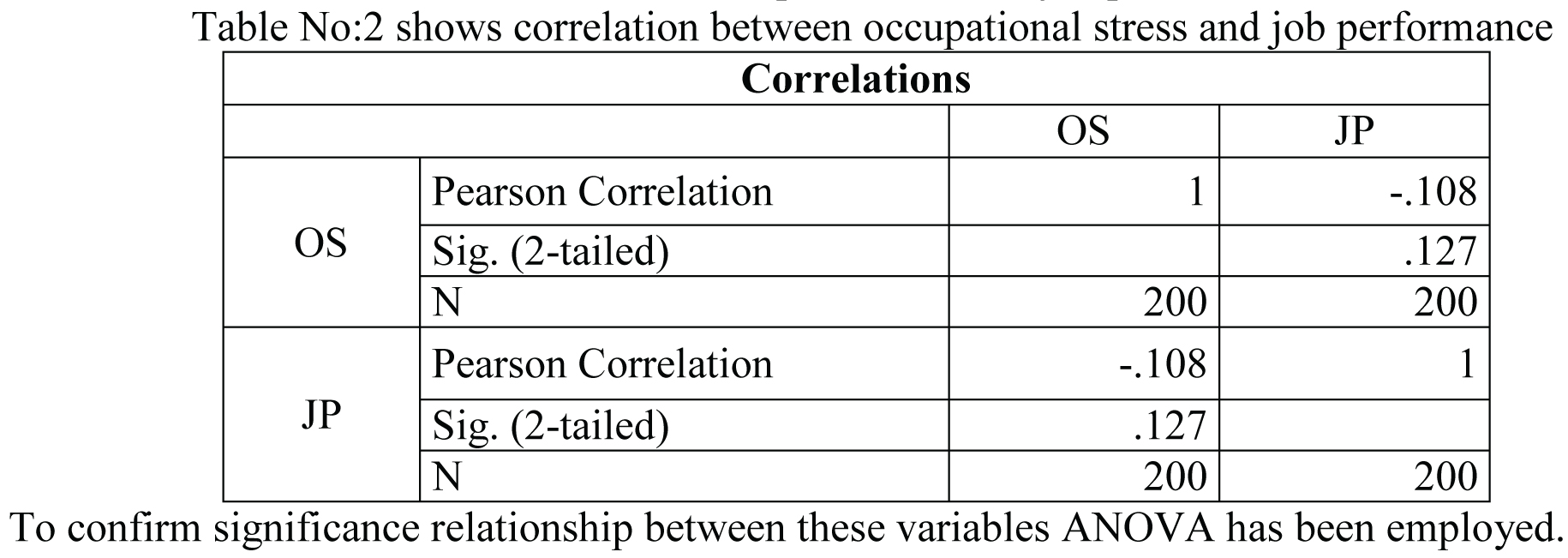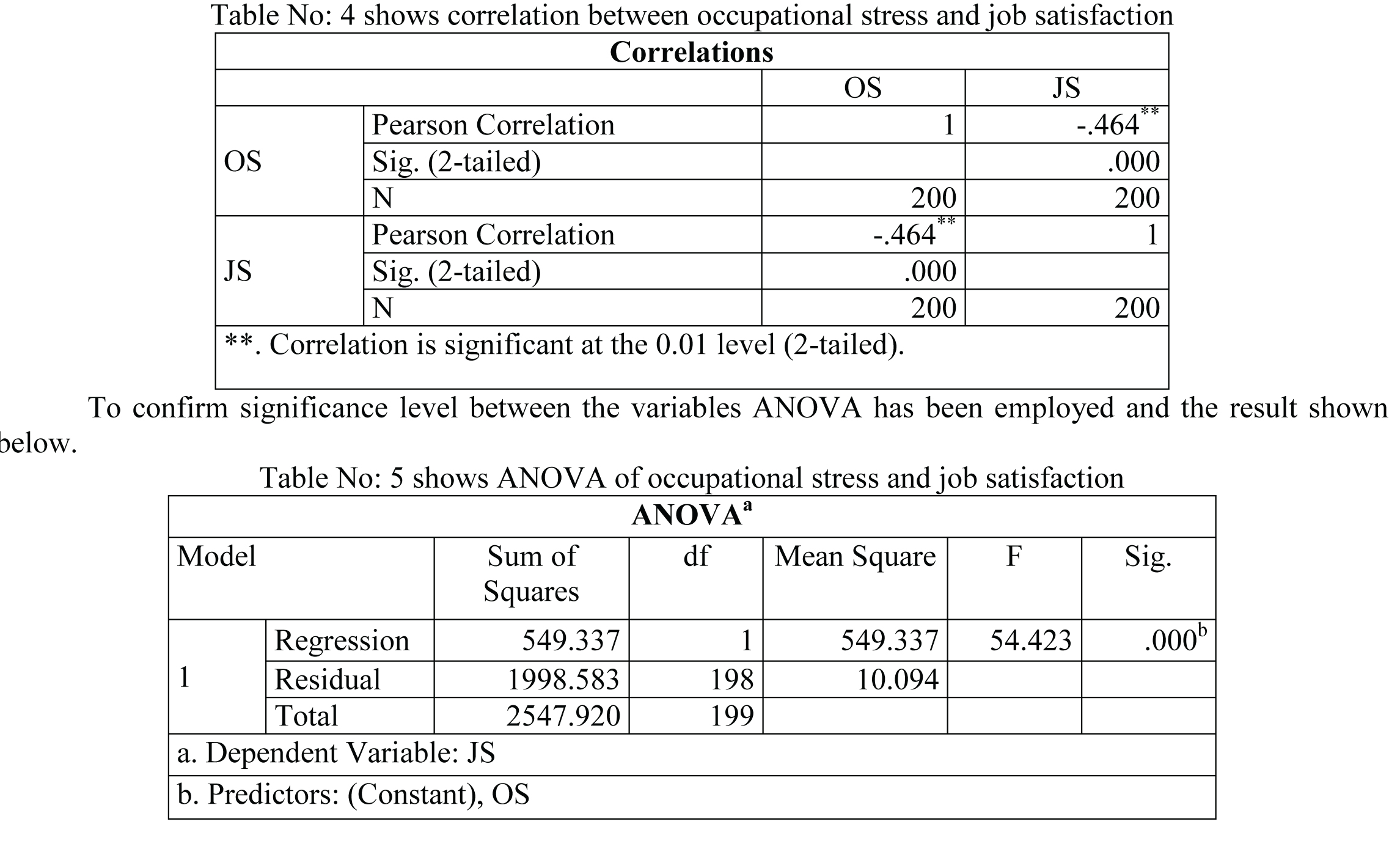Subscribe now to get notified about IU Jharkhand journal updates!
Assessment Of Women’s Occupational Stress And Its Effect On Their Job Performance And Job Satisfaction
Abstract :
Does occupational stress affect job performance and job satisfaction? To find out the answer to this research question, this research work has carried out. To do this research study 200 women employees of co-operative society’s (Banks) were selected through simple sampling method. The well structured questionnaire was utilized to collect the data from the respondents and Articles, Journals, websites etc were used as a secondary source of data. The Research found that, there is a negative relationship between occupational stress and job performance but not significant. In the same way there is a negative and significant relationship between occupational stress and job satisfaction of women employees. As increase the level of occupational stress, the job performance and job satisfaction decreases and vice-versa. Simple percentage, Correlation and ANOVA has been employed to analyze, interpret the data and hypothesis have tested through SPSS-20.
Keywords :
Occupational stress, Job performance, Job satisfaction, Co-operative societies.1. Introduction
Co-operative societies:
The bank can be termed as ‘an institution which has engaged in financial transitions’ or offers basic banking services i.e. accepting deposits and providing loans. The Banks play a vital role in financial transaction, which offers numerous financial facilities and opportunities to customers. Banks play many roles such as safeguard of money and valuable things, provide diverse kinds of loans, credits etc. Now days there are many banks are offering investment, deposits and insurance facility.
Co-operative banks are those took birth under cooperative societies act, such entities operating financial operations and the same belong to members, and such members may be the owners and customers. These banks provide a wide variety of banking and financial services such as loans, deposits, banking accounts etc to customers. Accepting the deposits and provides different kinds of loans customers is the major role of Co-operative banks.
There are different level of co-operative banks are operating their role such as State Co-operative, The Central Co-operative Bank and Primary co-operative credit societies.
Belagavi district is the popularly known as second capital of Karnataka. There several co-operative banks are working under Belgaum District Central Co-operative Bank Ltd. Mudalagi is the newly born Taluka in the Belagavi district, in which there are more than 70 urban co-operative banks are operating.
The term ‘Stress’ is descended from Latin word ‘Stringi’, which was popularly used in seventeenth Century. It means, “Hardship, adversity and affliction”. In the same way it also defined as “an undesired reaction of people, they have extreme pressures or other types of demands placed upon them”. The concept of ‘Stress’ was introduced first time in the life science by Hans Selye in the year 1936. There are many types of stress such as Eu-stress, distress, hyper-stress, hypo-stress, Neu-stress and Techno-stress. There are many researchers have found key factors those make people into pressure such as work environment, lack of management support, work overload, colleague etc. Generally it can be defined as an unwanted reaction of the people. As research opines, one out of three employees in the work organization suffers major stress due to misplacement of tools, papers, files, etc., poor salary, personality clashes, incompetent subordinates, superior, boring work, negative attitude towards management, lack of social security, high targets and many more. Therefore occupational stress is a major cause which effect on employees job performance and satisfaction.
Job performance:
Job performance is a focal problem in the human brain with respect to work and occupations. It is a vital part in an occupation where both employer and employee desire to gauge it. An assessment and development of an individual’s performance at his/her occupation can be opined as job performance. Armstrong and Baron, (2000) defined as “a good performance of the employees in an organization leads to a good organizational performance, thus, ultimately making an organization more successful and effective. Collier Broderick has identified ten dimensions of job performance those play vital role in the work such as quantity of work, timeliness of work, quality of work, usage of resources efficiently, customer impact, self-reliance of employee, productive work habits, adding skills and capabilities and alliance and compliance.
Job satisfaction:
Since the ancient days each and every work is central part that directed towards satisfaction of basic needs. It also referred as the way one feels about events, rewards, people, relation and amount of mental pleasure on the job. Locke defined as “a pleasurable or positive emotional state resulting from the appraisal of one’s job or job experience”. Job satisfaction is in regard to one's feelings or state-of-mind regarding the nature of their work. Job satisfaction can be viewed by the factors, such as work itself, the quality of one's relationship with their supervisor, the quality of the physical environment in which people work, degree of fulfillment in their work, etc. It plays a significant task in terms of employees’ health and well-being (Kornhourser, 1965; Khaleque, 1981), which add to the organization in terms of productivity, efficiency, employee relations, decreasing absenteeism and turnover (Vroom, 1964; loke, 1976; Khaleque, 1984).
2. Statement of the problem:
Place, situation, organization, person, profession, etc are not free from work or occupational stress (distress). The employees of every organization always get sick by occupational stress (Distress). It is also keep on effecting on their work performance and job satisfaction. Thus, to assess the occupational stress and its effect on job performance and job satisfaction of co-operative societies (Banks) in Belagavi district is significant. However, finally the research has done on “An Assessment Of Women’s Occupational Stress And Its Effect On Their Job Performance And Job Satisfaction- With Reference To Co-Operative Societies (Banks)”.
3. Literature review:
Lewis C.S. viewed as “Literature adds to reality, it does not simply describe it. It enriches the necessary competencies that daily life requires and provides; and in this respect, it irrigates the deserts that our lives have already become”. In the same way Samuel Johnson opined as “The greatest part of a writer's time is spent in reading, in order to write: a man will turn over half a library to make one book”. However, literature plays a significant role to do a research.
McCarthy, Power and Greiner (2010) in their work have found that most of the women nurses are feel physiological symptoms of Stress more than men because of night shift. The most common disease in women professionals of both Asia and non-Asians is backache (Sangeeta and Ipshita; 2011). Gladies and Kennedy (2011) have found that there is a significant correlation between the relationship of work stress and organizational climate among the women employees. Kavitha (2012) also found that women face more stress than men and more specifically married women faces more stress than the unmarried women. In the same way Nagaraju and Nandini (2013) have found that working married women experienced more stress, because they cannot affix their well being to family extensively. But Vishal, Mustiary and Lokesh (2012) have found in their research that gender does not have influence on stress, which means both men and women have stress. Alfred Ncube and Thembinkosi Tshabalala (2013) in their research have found that Poor pay, work load and poor management are directly related to job performance. Vishal and et al. (2011) in their work found that there is a significance difference between male and female towards role conflict, occupation, level of designation and different income level with role space conflict and these factors have directly related to job performance. Afsheen (2012) has posited that there is a direct relationship between work stress and job performance in any organization. In the same way Balasundaram and Valieu have identified that there is positive relationship between job satisfaction and performance. Even Mohammad and et al. (2012) have opined that banking sector employees in terms of job satisfaction are more focused on contextual performance than the task performance. Veena and Patil (2015) found that Quality environment is crucial and that leads to job satisfaction. It creates high morale, better productivity, service, and efficiency and work orientation.
4. Objectives:
- To know the level of occupational stress among women working in the co-operative societies (Banks).
- To assess the effect the occupational stress on job performance and job satisfaction among women working in the co-operative societies (Banks).
5. Hypothesis:
a) H1: There is negative and significant relationship between occupational stress and Job performance
b) H1: There is Negative and significant relationship between occupational stress and Job satisfaction
6. Methodology:
Simple random sampling method has been used to select 200 women employees of co-operative societies (Banks) in Belagavi district to study the occupational stress and its effect on job performance and job satisfaction. This research includes all the cadre of women employees. The primary data has been collected with help of well structured questionnaire and personal interaction with women employees. Cronbach’s alpha of variables has found to be Occupational Stress (0.780), Job performance (0.690) and Job performance (0.840). Secondary sources of data such as Books, journals, websites etc have been utilized. Statistical tools such as Simple percentage, correlation and ANOVA has employed to analysis and interpretation of data. Analysis has done with the help of SPSS 20.0.
7. Analysis and interpretation:
A) Descriptive information:

The above table number 1 reveals that 50 per cent of the respondents’ age was between the 26 and 30 years; 60 per cent were married; 60 per cent were graduates and 40 per cent were having less than 5 years of experience followed by 30 per cent having 11 to 15 years of experience.
B) Hypothesis:
a) H0: There is no negative and significant relationship between occupational stress and Job performance
H1: There is negative and significant relationship between occupational stress and Job performance
To know the relationship between the occupational stress and job performance, Pearson’s correlation has been utilized. It shows that (Pearson value -0.108) there is negative relationship between the variables but it is not significant. It also shows that as increase in the occupational stress, job performance is decreases.


The above table reveals that there is negative relationship between the occupational stress and job performance but it is not significant. The p-value i.e. 0.127>0.05; however there is no significant relationship between the both. So, null hypothesis is failed reject. It shows that the increase in the occupational stress is not significantly affecting the performance of the employees. A little decrease in the stress has greater change in the job performance. They are performing well though they are under stress because they take salary might be the reason for non-significance.
b) H0: There is no negative and significant relationship between occupational stress and Job satisfaction
H1: There is negative and significant relationship between occupational stress and Job satisfaction
To assess the relationship between the occupational stress and job satisfaction the Pearson’s correlation has employed and it has found that there is negative relationship between the variables (-0.464). It shows that as increase in the occupational stress, job satisfaction would decrease.

The above table reveals that there is negative relationship between occupational stress and job satisfaction. The P-values found that 0.000 and which less than the 0.05 Sig. levels. However, the null hypothesis has been rejected i.e. H0: There is no negative and significant relationship between occupational stress and Job satisfaction. Hence, this research has accepted the alternative hypothesis i.e. H1: There is negative and significant relationship between occupational stress and Job satisfaction. Salary is not only the factor which gauges the satisfaction level of the respondent. It shows that there is a negative and significant relationship between these variables.
8. Findings:
- 50 per cent of the employees’ age was between the 26 and 30 years.
- 60 per cent of employees were married.
- 60 per cent of employees were graduates and 20 per cent were post graduates.
- Regarding the experience 40 per cent were having less than 5 years followed by 30 per cent having 11 to 15 years of experience.
- There is negative relationship between the occupational stress and job performance but it is not significant.
- There is negative and significant relationship between the occupational stress and job satisfaction.
9. Conclusion:
The word stress is unavoidable phenomenon in each and organizational set up. In the same way the banks are also not free from that. The married women have to maintain their family and the work life balance. So that might be creating more pressure and that leads to occupational stress. They suppose to perform their duty because they get salary. However the stress may effect on their work performance negatively but not significantly. Salary plays a vital role to judge work performance. So there may not be significant relationship between the stress and job performance. But salary is a micro factor to gauge the satisfaction level of the employees. However this research has proved that there is negative and significant relationship between the occupational stress and job satisfaction of the women employees.
References:
- Afsheen, K. (Sep 2012). Role of Supportive Leadership as a Moderator between Job Stress and Job Performance. Information Management and Business Review. Vol. 4, No. 9, pp. 487-495
- Alfred Champion Ncube and Thembinkosi Tshabalala, (Dec, 2013), “Factors Contributing to the Cause of Work related Stress and Its Impact on Performance of Teachers in Nkayi District”, Nova Journals of Medical and Biological Sciences, Vol.1 (1), pp. 15-23.
- Armstrong, M., and Baron, A. (2000), Performance management. Human resource management.
- Balasundaram, and Valieu. Job satisfaction and employee work performance: A case study of People’s bank in Jaffna Peninsula, Shrilanka, ppS43-S47. http://www.academia.edu/download/34462143/5SriLankaBrabeteFFF.pdf.
- Collier Broderick, http://collierbroderick.com/performance-management/10-dimensions-of-performance/22/01/2016.
- Gladies, J., Kennedy, V. (June, 2011). Impact of Organizational Climate on Job Stress for women employees in Information Technology sector in India. Asia Pacific Journal of Research in Business Management, Vol 2, Issue 6, pp.66-76.
- Hans Selye (1936). https://www.stress.org/what-is-stress/
- https://www.fatfreekitchen.com/stress
- Kavitha, (May 2012). Role of stress among women employees forming majority workforce at IT sector in Chennai and Coimbatore, Tier-I and Tier-II centers. SONA- Global Management Review, Vol 6, Issues 3.
- Kothari, C.R., and Garg, G. (2014). Research Methodology: Methods and techniques. New Age International Publishers, Third edition, pp.55.
- Locke E.A, “The Nature and Cause of Job-satisfaction”, in MD Dunnette (ed.), Handbook of Industrial and Organizational Psychology, Chicago; Rand Mc Naaly, 1976, p.1300
- McCarthy, S., Power, and Greiner, B.A. (October, 2010). Perceived occupational Stress in Nurses working in Ireland. Oxford Journals, Society of Occupational Medicine, pp.604-610.
- Mohammad, A., Niaz, A., and Qamaruddin (2012). Facets of job satisfaction and its association with performance. International Journal of Business and Social Science, Vol.3, No.7, pp.322-326.
- Nagaraju and Nandini (2013). A factor of marital status highly influencing on stress of women employees. A case study at Insurance sector. International Journal of Business and Management Invention, Vol.2, Issue.10, pp.39-46.
- Sangeeta V. and Ipshita B. (2011). Occupational Role Stress among women executives in United Arab Emirates. International Journal of Research in Commerce and Management, Vol.2, issue.5, pp.21-29.
- Vishal, S., Lokesh, and Ashwitha, K.N. (2011). Role stress and Job performance in Banks: A critical analysis. PRERANA, Journal of Management Thought and Practice, VOl.3, Issue.1, pp.39-46.
- Vishal, S., Mustiary, and Lokesh, (August, 2012). Changing work Scenario: A cause for stress amongst Bank employees. International Journals of Research in Computer and Management, Vol.2, issue.8, pp.62-66.
- Vroom, V.H. (1964), Work and Motivation, John Wiley and Sons, New York, pp.99.
- Veena, E.A., and Patil, D.B. (2015). Women’s job satisfaction in academies. Golden Research Thoughts, Vol.5, Issue.3, pp1-6.
